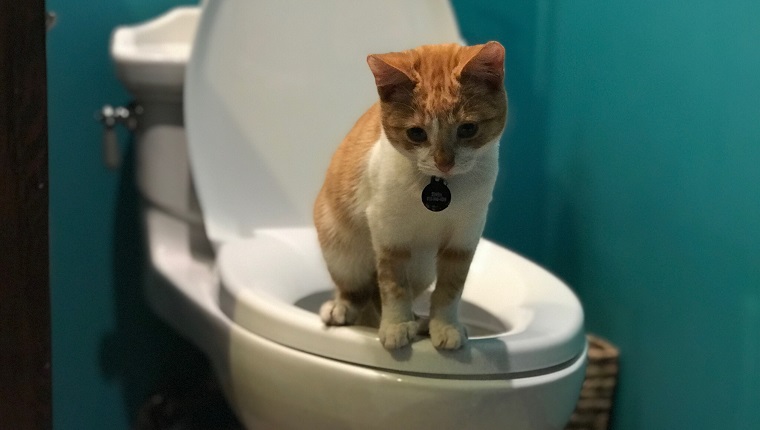Why Flushing Cat Poop Down Your Toilet Can Cause Problems - Tips for Safe Handling
Why Flushing Cat Poop Down Your Toilet Can Cause Problems - Tips for Safe Handling
Blog Article
How do you really feel on the subject of How to Dispose of Cat Poop and Litter Without Plastic Bags?

Intro
As cat owners, it's vital to bear in mind how we get rid of our feline good friends' waste. While it might appear hassle-free to purge pet cat poop down the commode, this technique can have destructive effects for both the setting and human health and wellness.
Environmental Impact
Flushing cat poop presents unsafe virus and bloodsuckers into the water supply, posturing a substantial danger to aquatic ecological communities. These contaminants can negatively affect aquatic life and concession water quality.
Health and wellness Risks
Along with ecological problems, purging cat waste can also position health and wellness dangers to people. Feline feces might consist of Toxoplasma gondii, a bloodsucker that can create toxoplasmosis-- a possibly extreme health problem, specifically for expecting women and individuals with weakened immune systems.
Alternatives to Flushing
Fortunately, there are more secure and extra accountable ways to take care of cat poop. Take into consideration the adhering to options:
1. Scoop and Dispose in Trash
The most common technique of disposing of feline poop is to scoop it right into an eco-friendly bag and throw it in the trash. Be sure to utilize a specialized clutter inside story and take care of the waste promptly.
2. Usage Biodegradable Litter
Opt for naturally degradable pet cat litter made from products such as corn or wheat. These clutters are environmentally friendly and can be safely dealt with in the trash.
3. Hide in the Yard
If you have a backyard, think about burying feline waste in a marked location away from vegetable yards and water sources. Make certain to dig deep enough to stop contamination of groundwater.
4. Set Up a Pet Waste Disposal System
Purchase a pet garbage disposal system particularly designed for feline waste. These systems utilize enzymes to break down the waste, decreasing smell and environmental influence.
Conclusion
Liable animal possession extends beyond giving food and shelter-- it likewise entails correct waste monitoring. By refraining from flushing pet cat poop down the toilet and choosing alternate disposal techniques, we can lessen our ecological impact and shield human health.
Why Can’t I Flush Cat Poop?
It Spreads a Parasite
Cats are frequently infected with a parasite called toxoplasma gondii. The parasite causes an infection called toxoplasmosis. It is usually harmless to cats. The parasite only uses cat poop as a host for its eggs. Otherwise, the cat’s immune system usually keeps the infection at low enough levels to maintain its own health. But it does not stop the develop of eggs. These eggs are tiny and surprisingly tough. They may survive for a year before they begin to grow. But that’s the problem.
Our wastewater system is not designed to deal with toxoplasmosis eggs. Instead, most eggs will flush from your toilet into sewers and wastewater management plants. After the sewage is treated for many other harmful things in it, it is typically released into local rivers, lakes, or oceans. Here, the toxoplasmosis eggs can find new hosts, including starfish, crabs, otters, and many other wildlife. For many, this is a significant risk to their health. Toxoplasmosis can also end up infecting water sources that are important for agriculture, which means our deer, pigs, and sheep can get infected too.
Is There Risk to Humans?
There can be a risk to human life from flushing cat poop down the toilet. If you do so, the parasites from your cat’s poop can end up in shellfish, game animals, or livestock. If this meat is then served raw or undercooked, the people who eat it can get sick.
In fact, according to the CDC, 40 million people in the United States are infected with toxoplasma gondii. They get it from exposure to infected seafood, or from some kind of cat poop contamination, like drinking from a stream that is contaminated or touching anything that has come into contact with cat poop. That includes just cleaning a cat litter box.
Most people who get infected with these parasites will not develop any symptoms. However, for pregnant women or for those with compromised immune systems, the parasite can cause severe health problems.
How to Handle Cat Poop
The best way to handle cat poop is actually to clean the box more often. The eggs that the parasite sheds will not become active until one to five days after the cat poops. That means that if you clean daily, you’re much less likely to come into direct contact with infectious eggs.
That said, always dispose of cat poop in the garbage and not down the toilet. Wash your hands before and after you clean the litter box, and bring the bag of poop right outside to your garbage bins.
https://trenchlesssolutionsusa.com/why-cant-i-flush-cat-poop/

Hopefully you enjoyed reading our topic on Don’t flush cat feces down the toilet. Thank you for spending some time to browse our short article. You should take the time to share this write-up if you liked it. Thank you for taking the time to read it.
Call Today Report this page